The Sunday morning when I visited the Rotunda (see: https://www.svudapodji.com/en/thessaloniki-3/) was in fact set aside for visiting some of the numerous churches that exist in the city. I’ve already said that Thessaloniki is in the UNESCO World Heritage List specifically on account of the Paleochristian and Byzantine monuments that are located here and that are considered to be some of the most important from the period of Byzantium. That morning, my main goal was to go to the Church of Holy David, but I first stopped at the Church of St Nicholas from the 14th century. The church has very nice and well preserved frescoes, but when I got there the service was well under way and the small church was full with people, so I sat down on a bench in the yard and waited for the service to end. While I was sitting quietly in the yard, I could enjoy the beautiful chanting that could be heard from the church.
When the service finished, as I waited for the church to get empty, a woman came out and sat on the bench next to me, so we started to chat. During our conversation, she shared with me a piece of bread she got at the church and I felt very honoured.
Having visited the Church of St Nicholas, I followed narrow streets all the way to the Holy David’s Church which I found without any problems. The tactics of memorizing the route applied a couple of days earlier worked flawlessly. Generally speaking, the streets north of Agiou Dimitriou street are mostly completely intertwined and I enjoyed it immensely to go through them. Less traffic and less crowds and noise.
The 5th century Holy David’s Church is known for its perfectly preserved mosaic that is truly outstanding and absolutely worth the effort of finding this almost hidden place. In front of the entrance into the church, there is a plateau from which one may enjoy a beautiful view of the coastal parts of the city and the Aegean Sea.
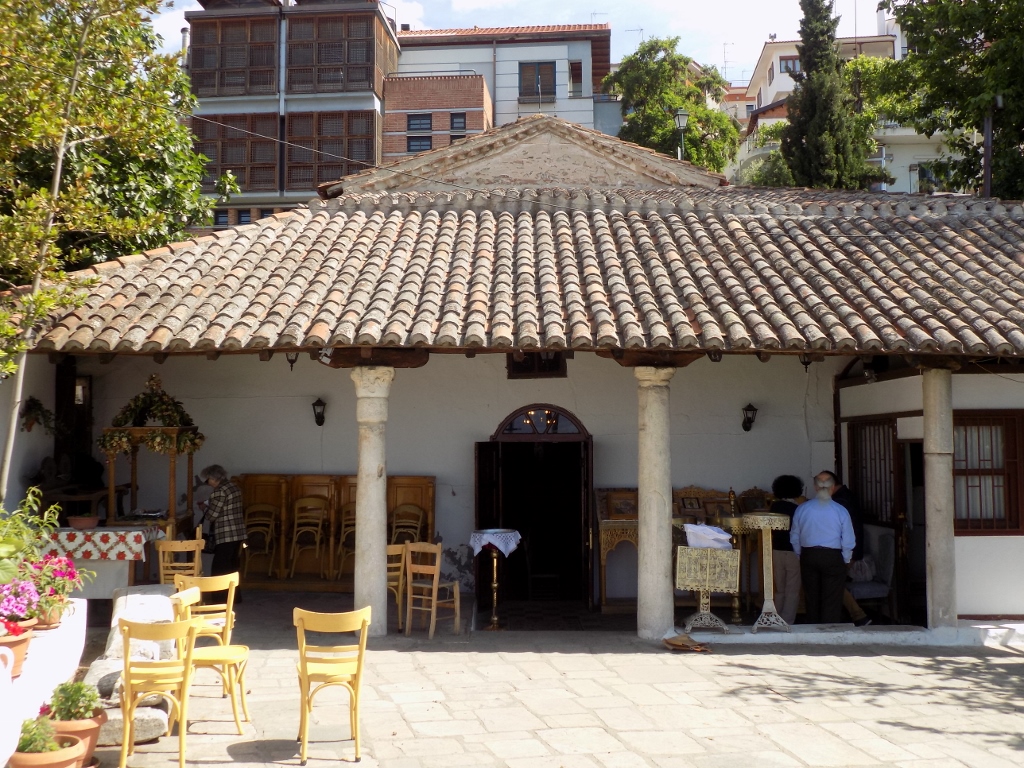 Holy David’s Church
Holy David’s Church
When you pass through this part of Thessaloniki above Agiou Dimitriou street, I suggest you visit a couple of churches more. One of them is the Church of Prophet Elijah from the 14th century. It is interesting that when you look at it from the outside it may be seen perfectly clearly that its central dome is askew. This is not a unique case. The time has probably been the culprit, but the entire edifice does appear very stable. Inside it contains particularly interesting columns, but I preferred the remains of wall painting that may be seen from the outside, especially around the windows.
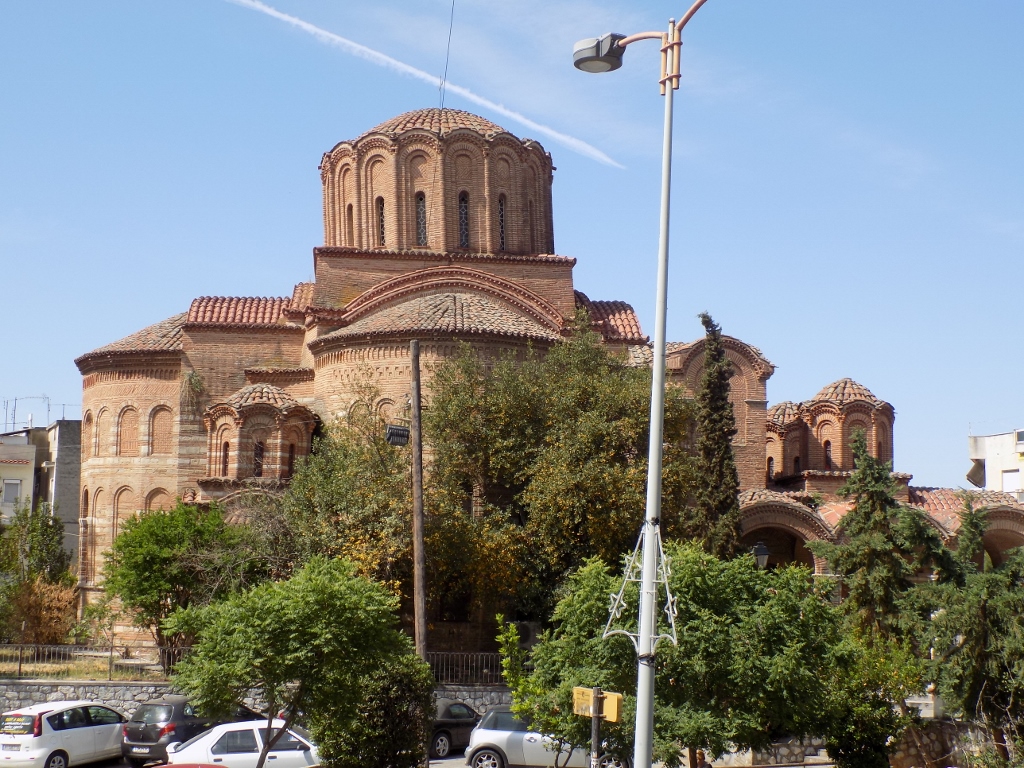 Church of Prophet Elijah
Church of Prophet Elijah
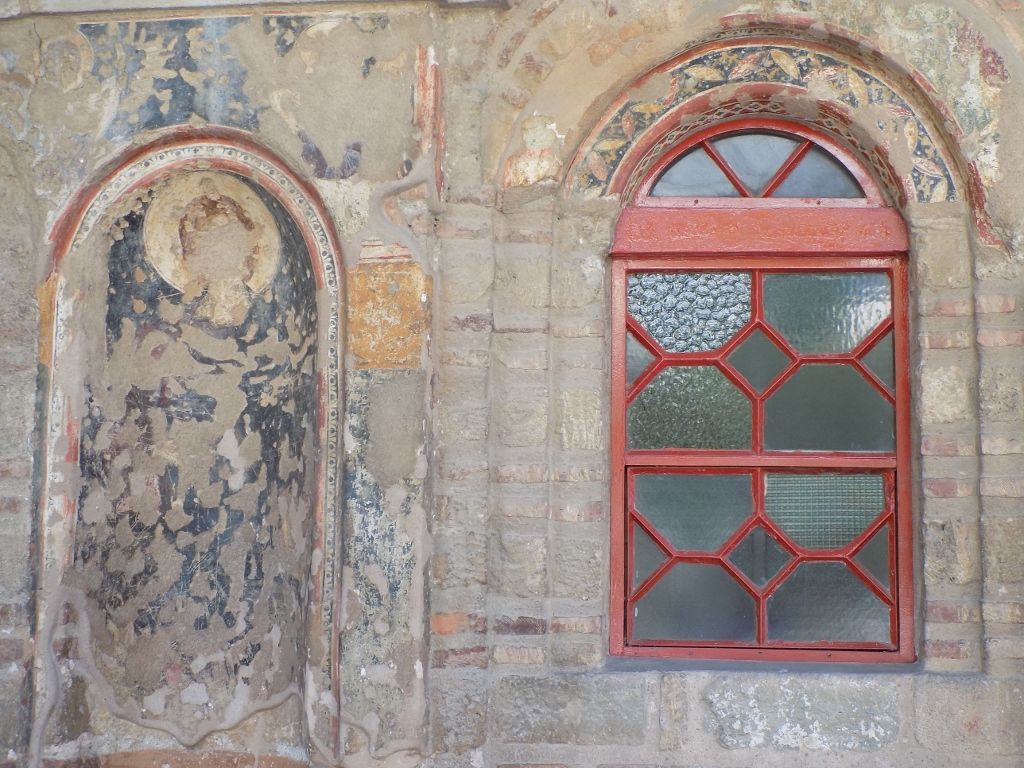 Church of Prophet Elijah
Church of Prophet Elijah
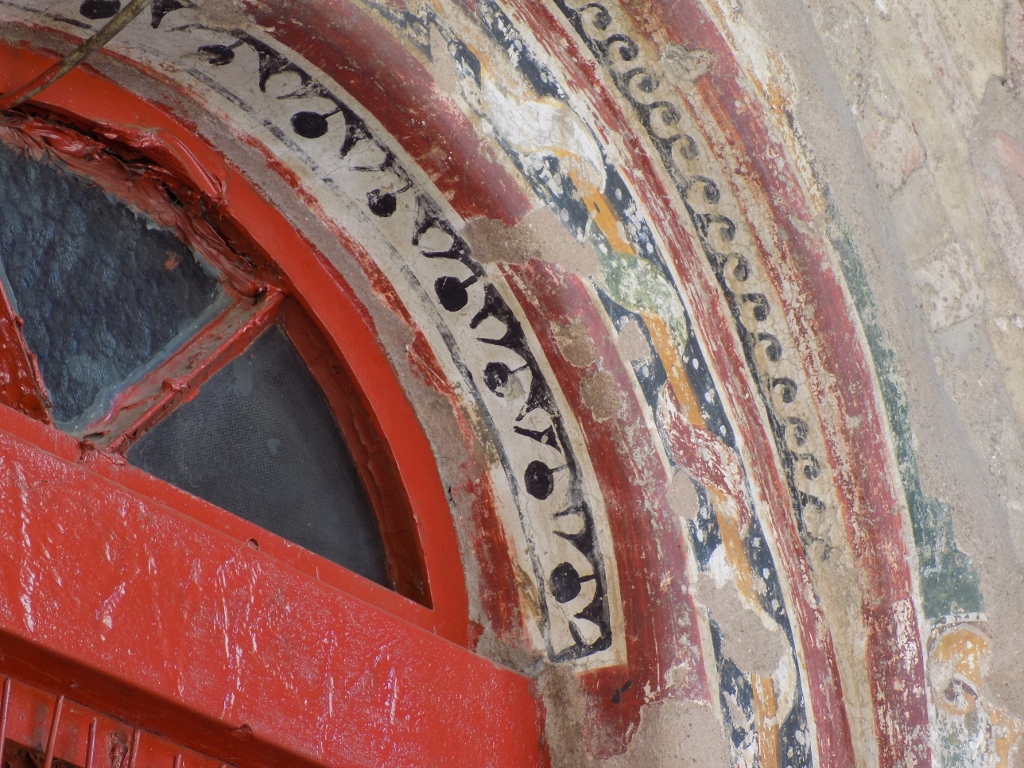 Church of Prophet Elijah
Church of Prophet Elijah
There is also the Church of St Catherine nearby and it is all in arches and appears very well-proportioned as a building. When I got to it, there was a christening of a baby going on, so I walked inside of it very discretely, trying not to impose on anybody. Although I had expected to be taken by frescos from the ancient times, there was little to be seen. This in combination with the baptism ceremony I didn’t want to disturb meant that I stayed there for a very short period of time.
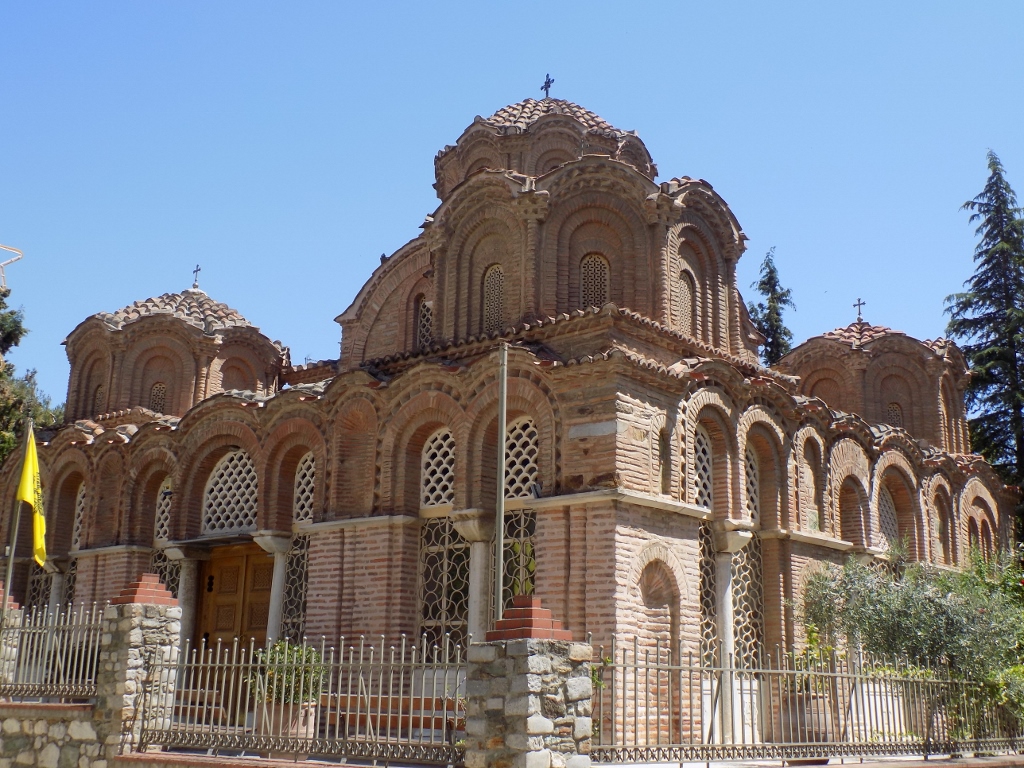 Church of St Catherine
Church of St Catherine
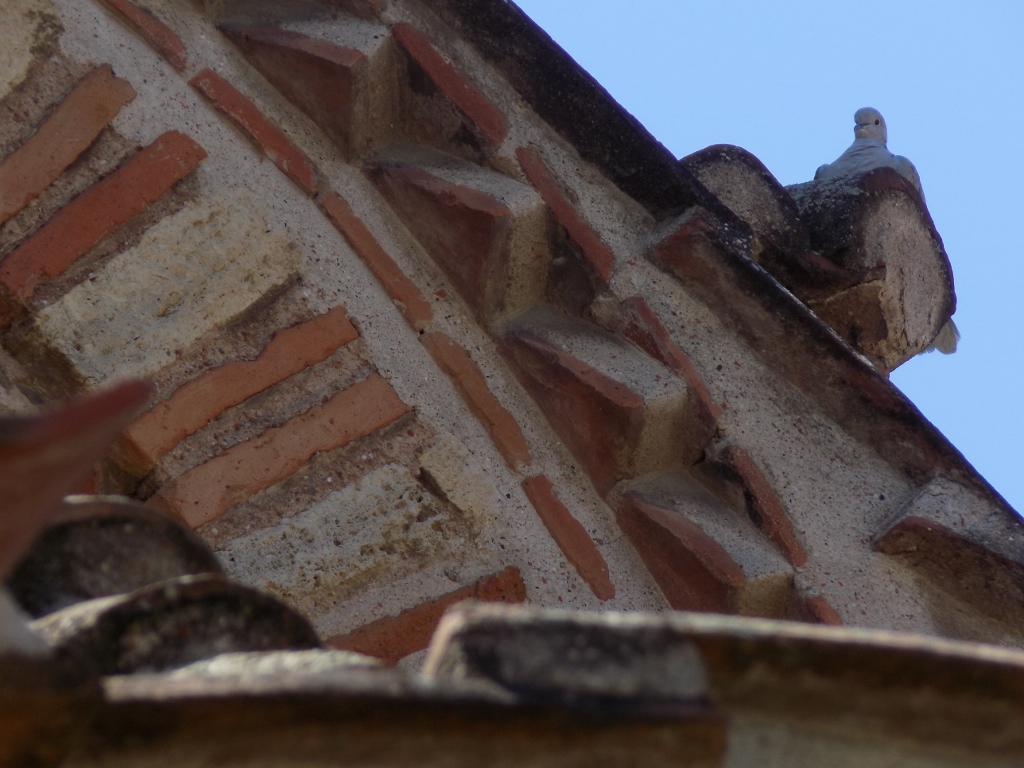 Church of St Catherine, a construction detail with a Eurasian collared dove
Church of St Catherine, a construction detail with a Eurasian collared dove
In the upper part of the city, there are also a couple of other sites that are included within the property from the UNESCO World Heritage List. These are the Church of the Holy Apostles, as well as Monastery Vladaton and Byzantine Baths, but I didn’t visit them on this occasion.
I particularly wanted to go to the Church of St Demetrius again, but before that I inadvertently came across a very interesting part in the old town with a few nice restaurants and cafes where I made a most enjoyable break. This is in Alexandras Papandopoulou street close to the crossroad with Klious street.
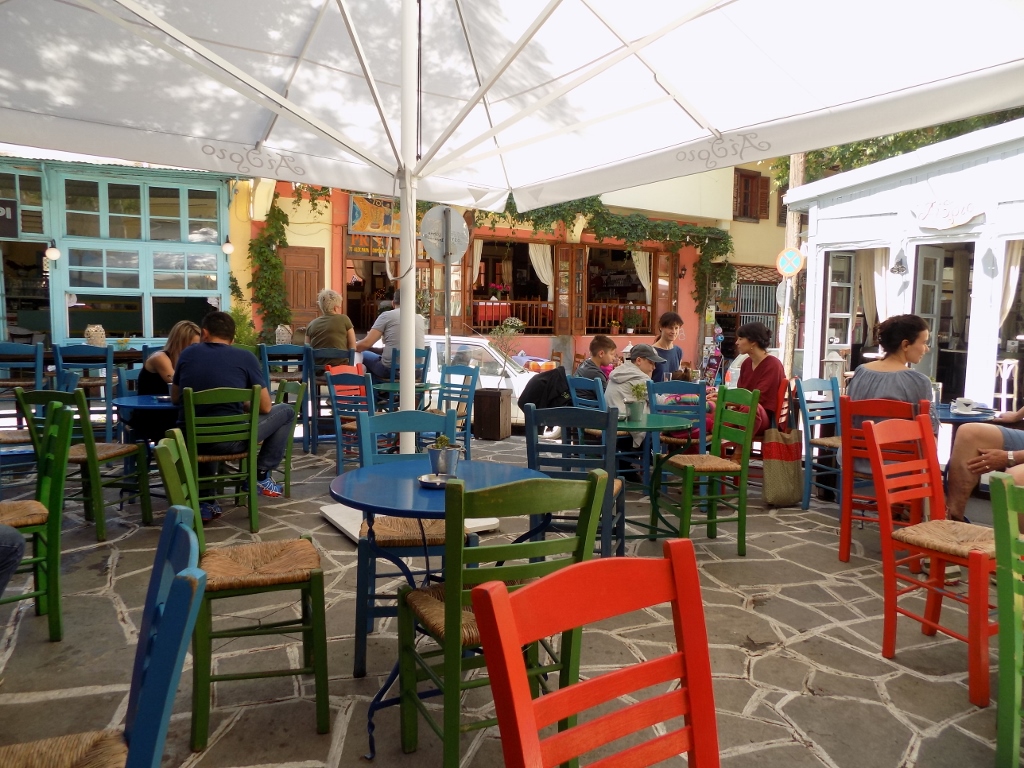 Garden of a cafe in Alexandras Papandopoulou street
Garden of a cafe in Alexandras Papandopoulou street
After this nice break, I headed for the Church of St Demetrius. It was an early Sunday afternoon and I saw a large crowd on the plateau in front of the church, so I thought it was a wedding party or something similar, but other than a lot of people there, I didn’t see anything else to support my theory. Still, there was a folklore group whose members walked leisurely around and then had their photos taken. I thought that maybe they had already finished whatever it was they were doing, but as it turned out I was wrong. Soon a wonderful program with songs and dances started and I immensely enjoyed the costumes and the whole thing. It all lasted for some 20 minutes and my only worry was that I might get sunburned, since it was quite hot, but this seemed not to bother at all the dancers who were dressed in full national costumes, on top of which they danced. When the “official” part was over, the musicians continued playing and the people who only watched until then joined in. I would have done it myself, but I don’t know the steps to Greek national dances, so I stayed there on the edge just hopping with my feet to the beat of the music.
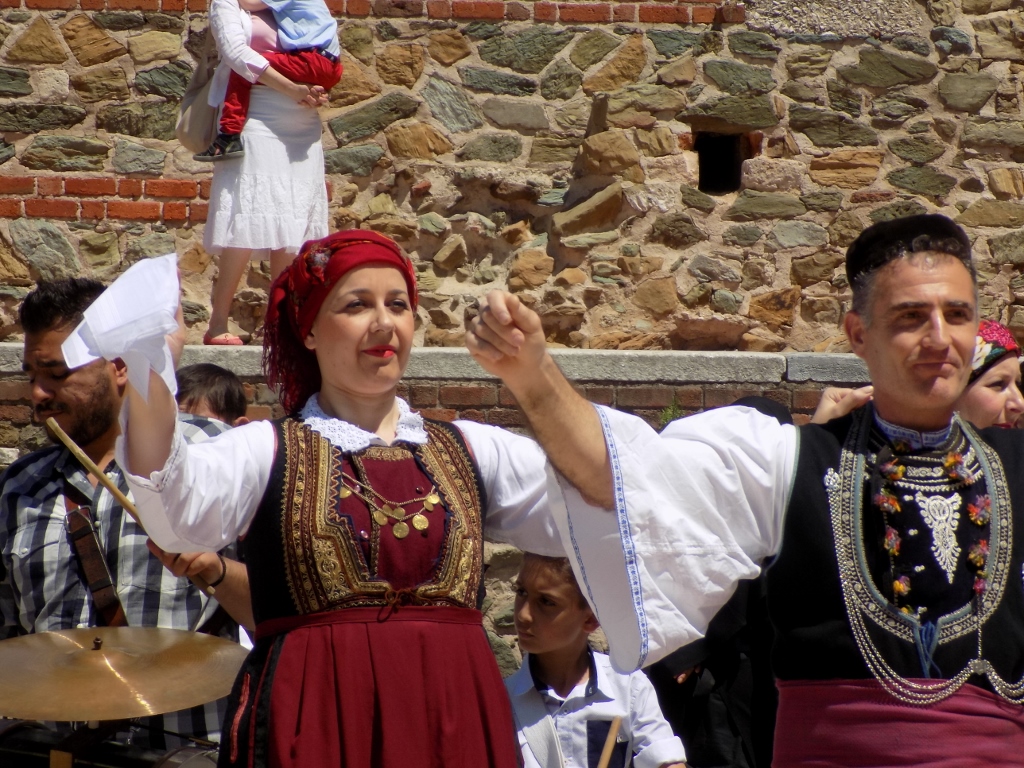 Folklore dances in front of the Church of St Demetrius
Folklore dances in front of the Church of St Demetrius
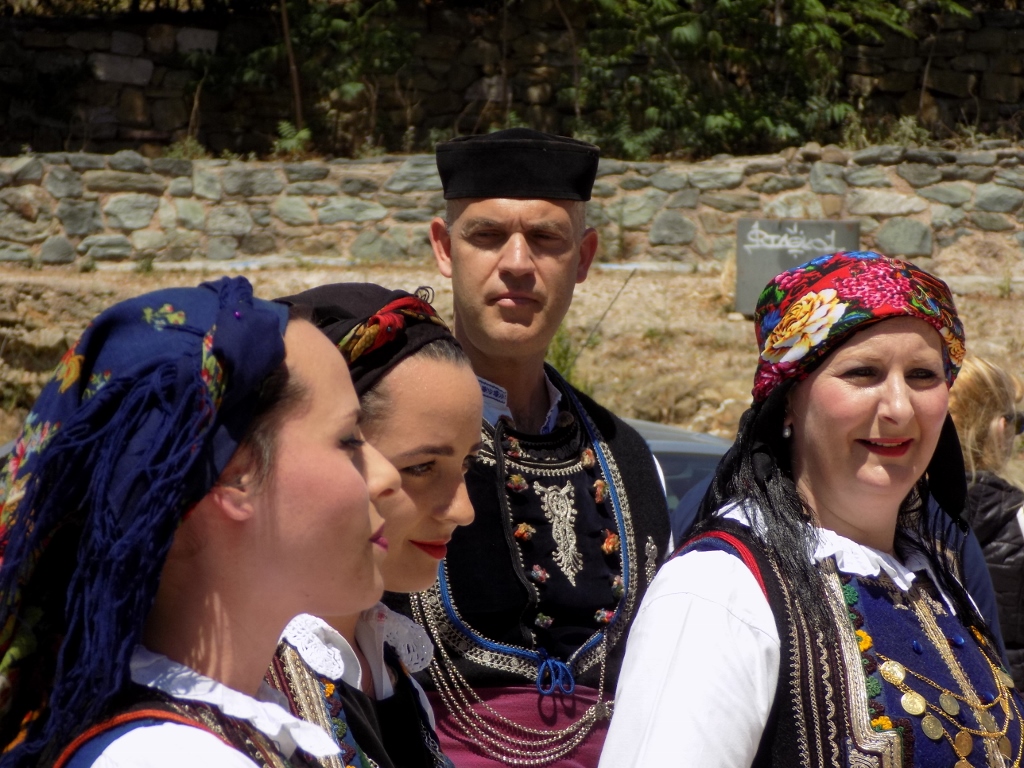 Folklore dances in front of the Church of St Demetrius
Folklore dances in front of the Church of St Demetrius
Since there were many people and a lot of noise, plus I was told there would be christening soon, I decided to come back here a little later. Still, before leaving I bought some monastery cheeses sold by a couple of nuns at a stall in front of the church.
As I’ve already mentioned in one of my previous texts, when I came back, it turned out I could not visit the crypt. Still, that did not prevent me from enjoying some other important elements of the church.
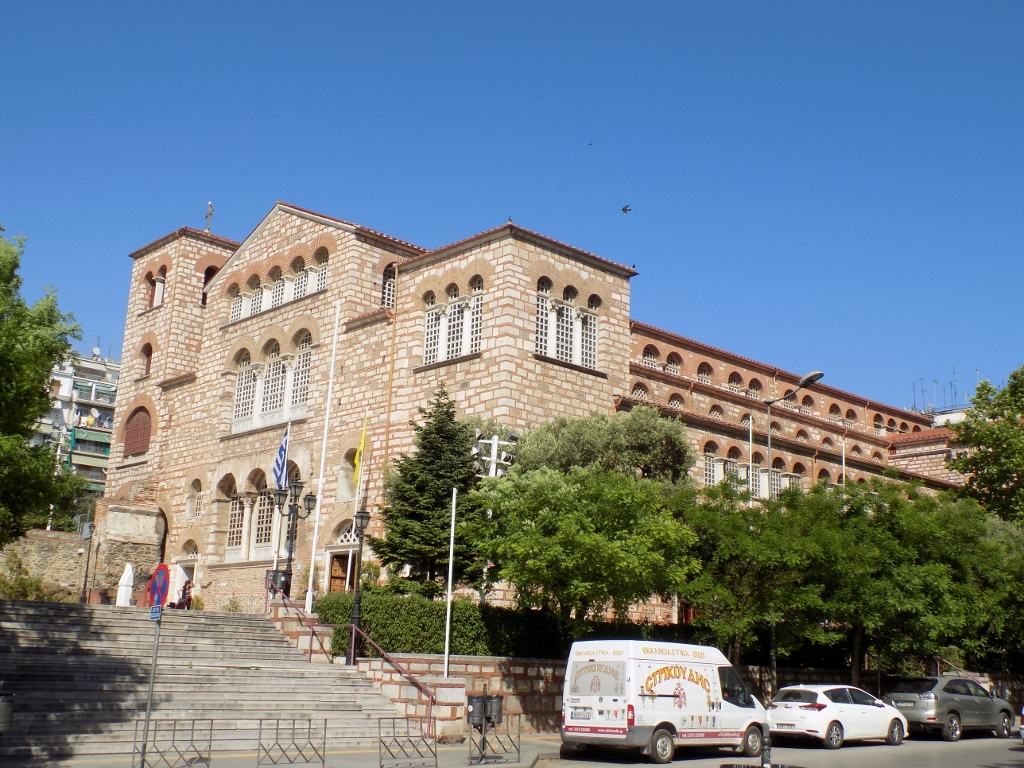 Church of St Demetrius
Church of St Demetrius
The Church of St Demetrius, who is the patron saint of Thessaloniki, was built in honour of martyr Saint Demetrius of Thessaloniki as a five-aisled building on the spot which is considered to be the place where the martyr was first incarcerated and then killed during the persecution of Christians by Roman emperors. With time, the church was turned into a mosque and in 1917 it got severely damaged in a large fire that engulfed the city. Although the reconstruction took a couple of decades, the church was finally re-consecrated in 1949.
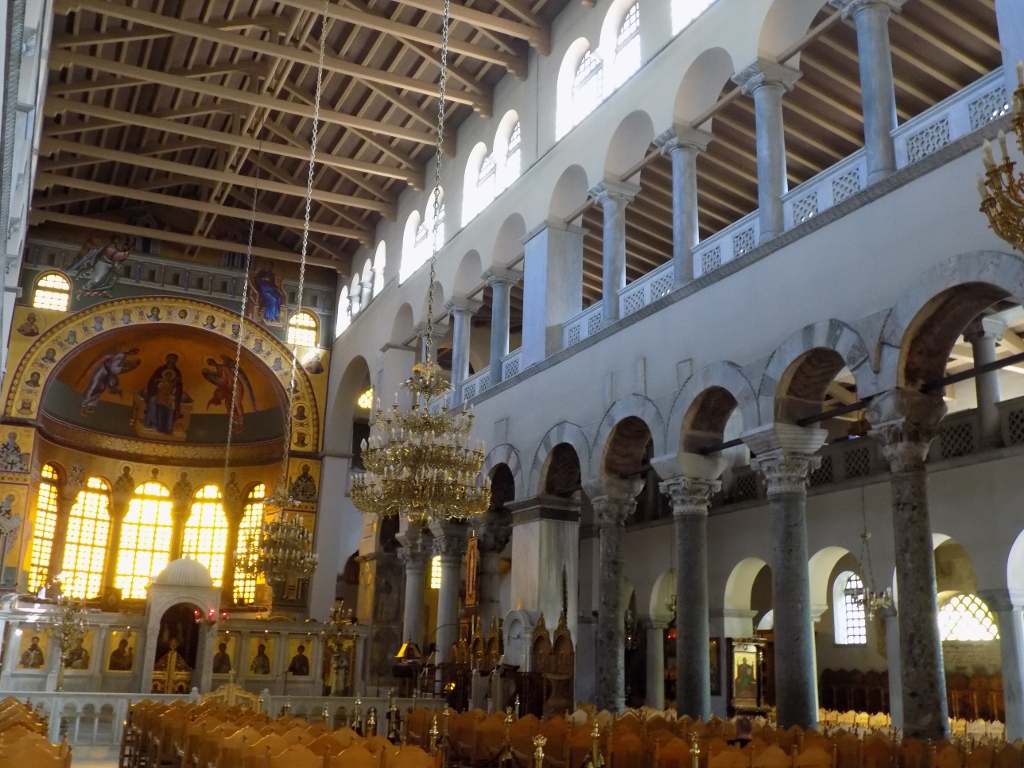 Church of St Demetrius, the central nave and two aisles on the right side
Church of St Demetrius, the central nave and two aisles on the right side
Nowadays, in farthest left aisle there is a small chapel with a coffin containing remains of Saint Demetrius. Near the chapel which is entered from one side and exited from the other, there is a stand with blank pieces of paper on it. It is for writing the name of a person or persons who you wish to be mentioned in the evening prayers of the day.
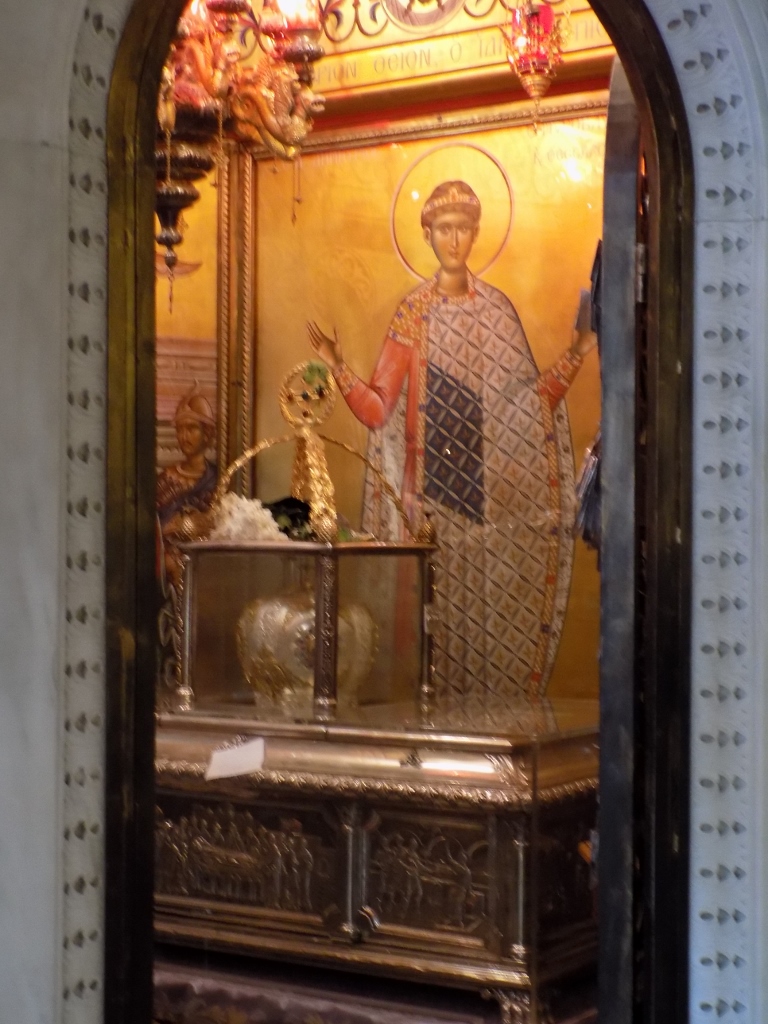 Church of St Demetrius, coffin with remains of Saint Demetrius
Church of St Demetrius, coffin with remains of Saint Demetrius
Taking into account the volatile history of the church, it is a true wonder that any of the original decorations have survived. Thus, on top of some columns near the sanctuary, one may see extraordinary mosaics from the 7th century.
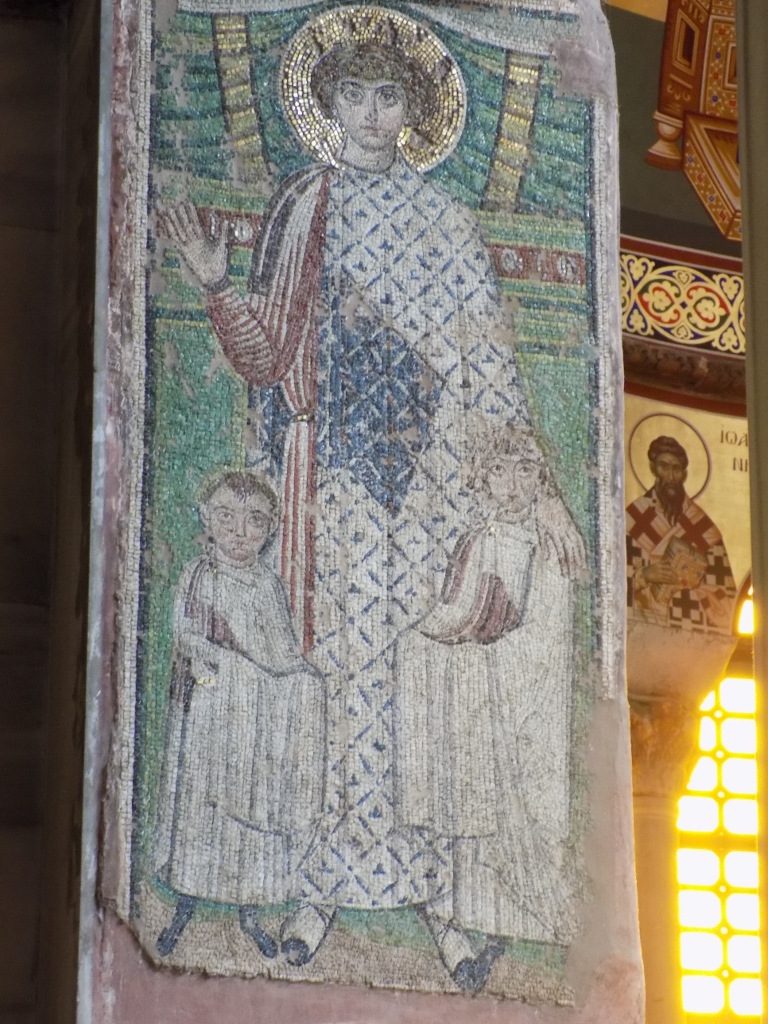 Church of St Demetrius, mosaic of St Demetrius with children
Church of St Demetrius, mosaic of St Demetrius with children
The last morning I went for a leisurely walk along the sea until I reached the Aristotle Square where I sat down and had a coffee and a cake in one of those gorgeous pastry shops Thessaloniki is full of. One actually needs to go from one shop window to the next and enjoy the scenery, for I don’t think it would be feasible to eat at each and every spot without being sick. At least not over only a few days. But, generally speaking, Thessaloniki is full of cafes, restaurants, pastry shops that are either new, modern, traditional, posh, less formal or whatever and they are all full. Except a couple of places which I mention along the way when this adds to my story, I don’t have much to say about them or give some particular recommendation. Unless you are specifically keen on visiting some particular place, I guess the best way is just to relax, go with the flow and take a seat wherever you feel tired and need a rest or wherever your eye catches something appealing.
A good part of the city centre along the sea, mostly through Egnatia street, is of commercial nature, it’s full of shops, cafes and restaurants. I guess there are offices, too, but I didn’t pay much attention to such things. Of course, there are also residential buildings 8 to 9 floors high. Above Egnatia street, there is a section that is predominantly filled with residential buildings, but lower ones, and from Agiou Dimitriou street, in which there is the Church of St Demetrius, there are numerous intermingled small streets with a large number of private houses. In that section, between Agiou Dimitriou street and the ramparts that are on the top of the steep hill, there are also those small churches I have already mentioned. Well now, we all have our own preferences, but if you arrive in Thessaloniki with intention to visit places that are not shops or food and drink facilities, then this section is particularly interesting.
Still, the central part of the city also contains some picturesque places that are worth the visit. Somehow right next to the Aristotle Square, i.e., on both sides of the pedestrian street of the same name leading to Egnatia street, there is a large central market, Kentriki Agora. There are all sorts of things there, fresh fish and various sea creatures, meat including skinned sheep and pig heads, not to mention pig feet and tripe, eggs and plucked chickens some of which hang unattractively from hooks, there are fruits and vegetables, flowers, as well as cheep clothes, shoes, purses, bags and sneakers, tourist souvenirs, spices, olives and nuts. There are also a lot of restaurants there, too.
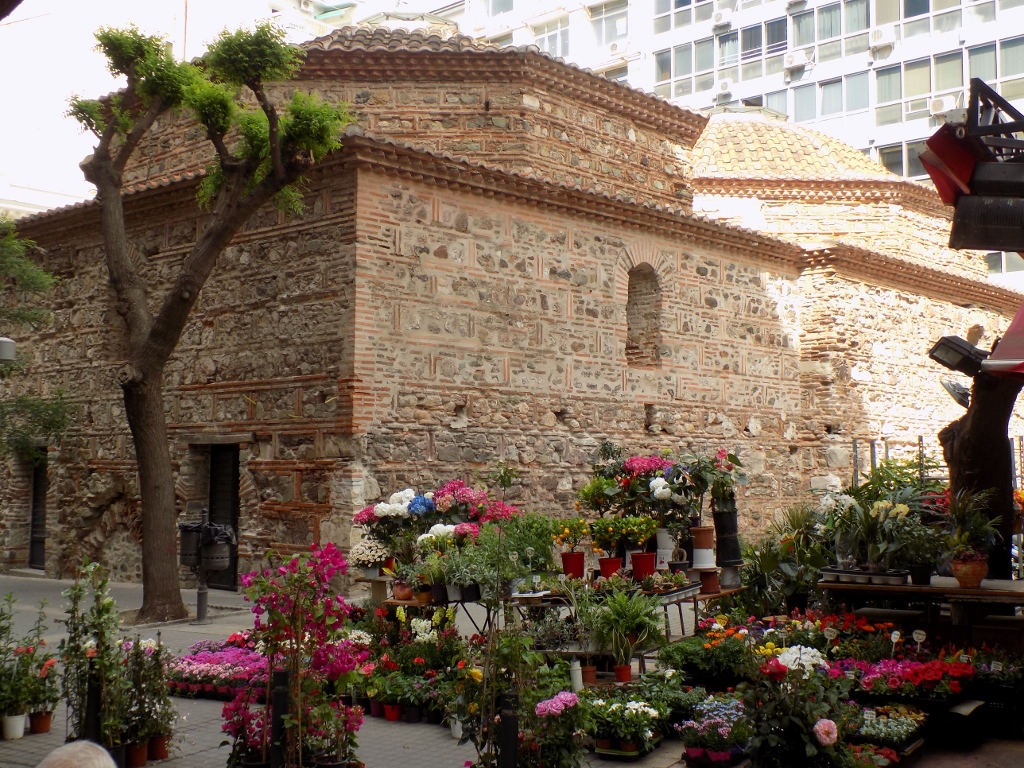 Surroundings of the central market
Surroundings of the central market
I think I should also mention that sunset in Thessaloniki is not particularly attractive, for the west side of the city renders a view of large metal constructions, cranes or whatever, as a part of a large Thessaloniki port, unless you catch some good angle.
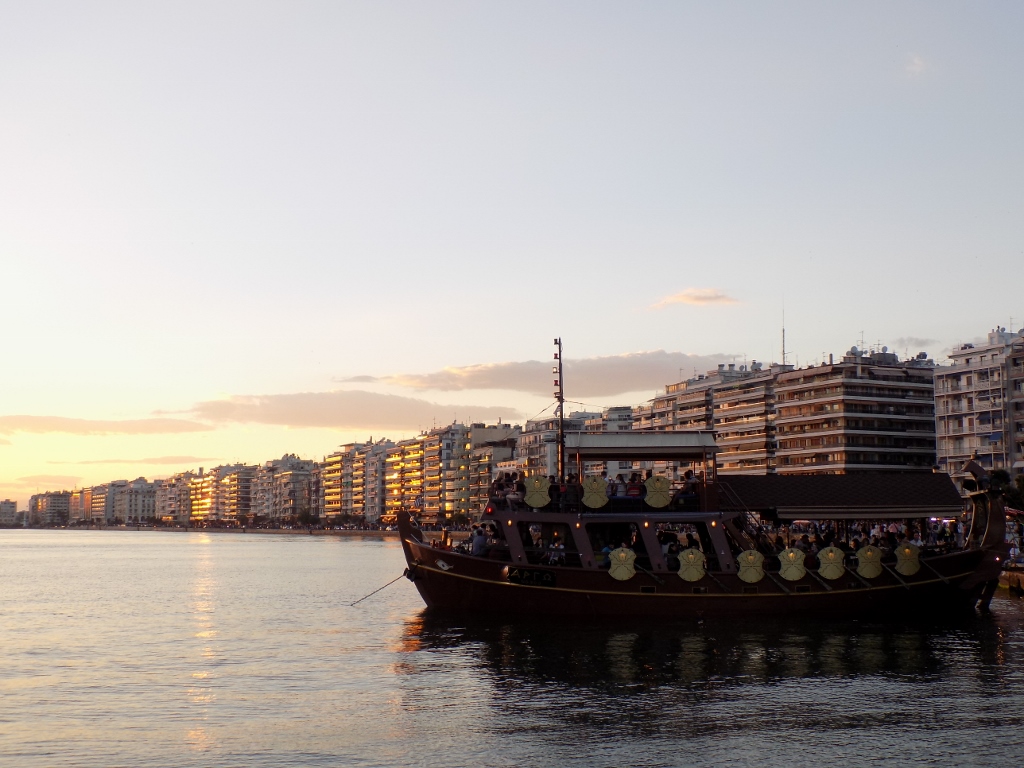 Tourist boat near the White Tower
Tourist boat near the White Tower
Also, the view towards the sea horizon is not very romantic either, although one may discern mount Olympus in the distance, because this nice nature is spoiled by tankers that wait for their turn to be loaded or unloaded. Still, there are a lot of places where you may go and find some point from which to enjoy the scenes that surround you.
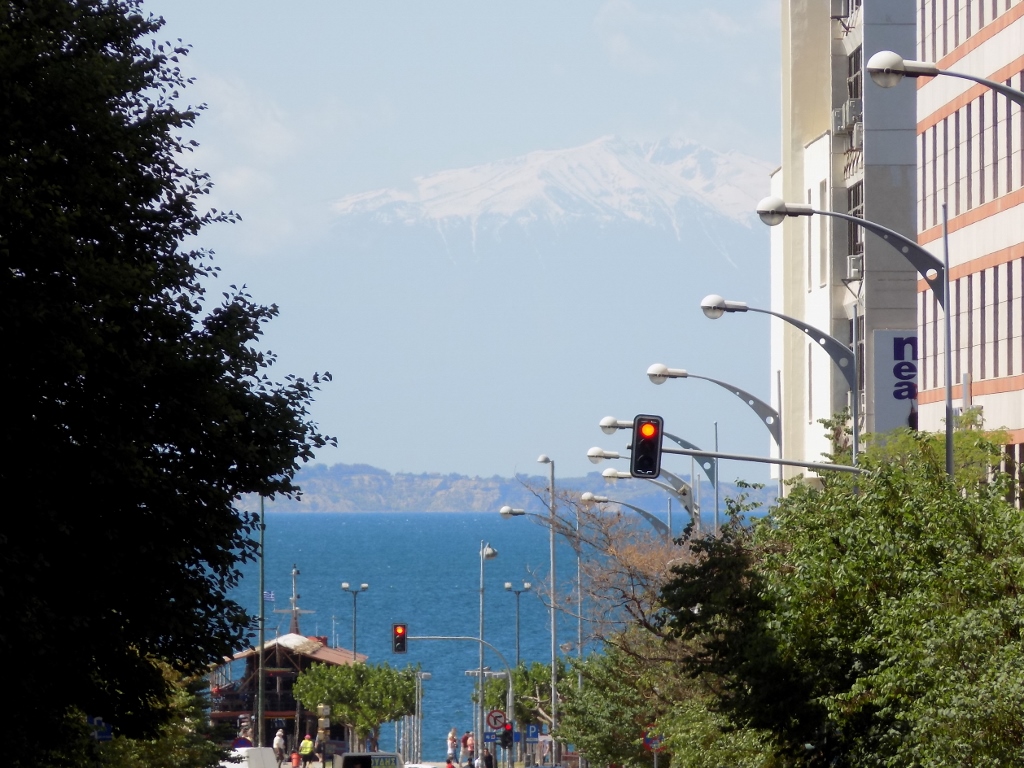 Mount Olympus
Mount Olympus
Thessaloniki is not the place which one comes to for summer vacation. After all, in summer, even the residents of Thessaloniki, whenever they have time, get out of their city and head towards some of the large number of smaller places on the coast that may be found in its vicinity. Whether there or on the countless number of islands and resorts on the shores of continental Greece, it is easy to find a beach that is appropriate for one’s own taste. Or perhaps not; on account of such huge choice.
But, although all of Greece is full of both natural beauty and historic monuments and sites, Thessaloniki is primarily an attractive and large city (second largest in the country after Athens) which represents a wonderful mixture of different things a traveller may desire. It is possible to find here monuments from different epochs, museums, atmosphere of relaxation and good time, shops for anyone’s taste and pocket, as well as prime gastronomic delights. And it is up to the traveller to head there, while Thessaloniki will be waiting at the same place where it was founded over 2000 years ago.